Warehouse Safety Training: The Complete Guide for Employers & Workers
Discover the ultimate guide to warehouse safety training for employers and workers. Learn key topics, tips, and steps to keep teams safe.
Discover the ultimate guide to warehouse safety training for employers and workers. Learn key topics, tips, and steps to keep teams safe.
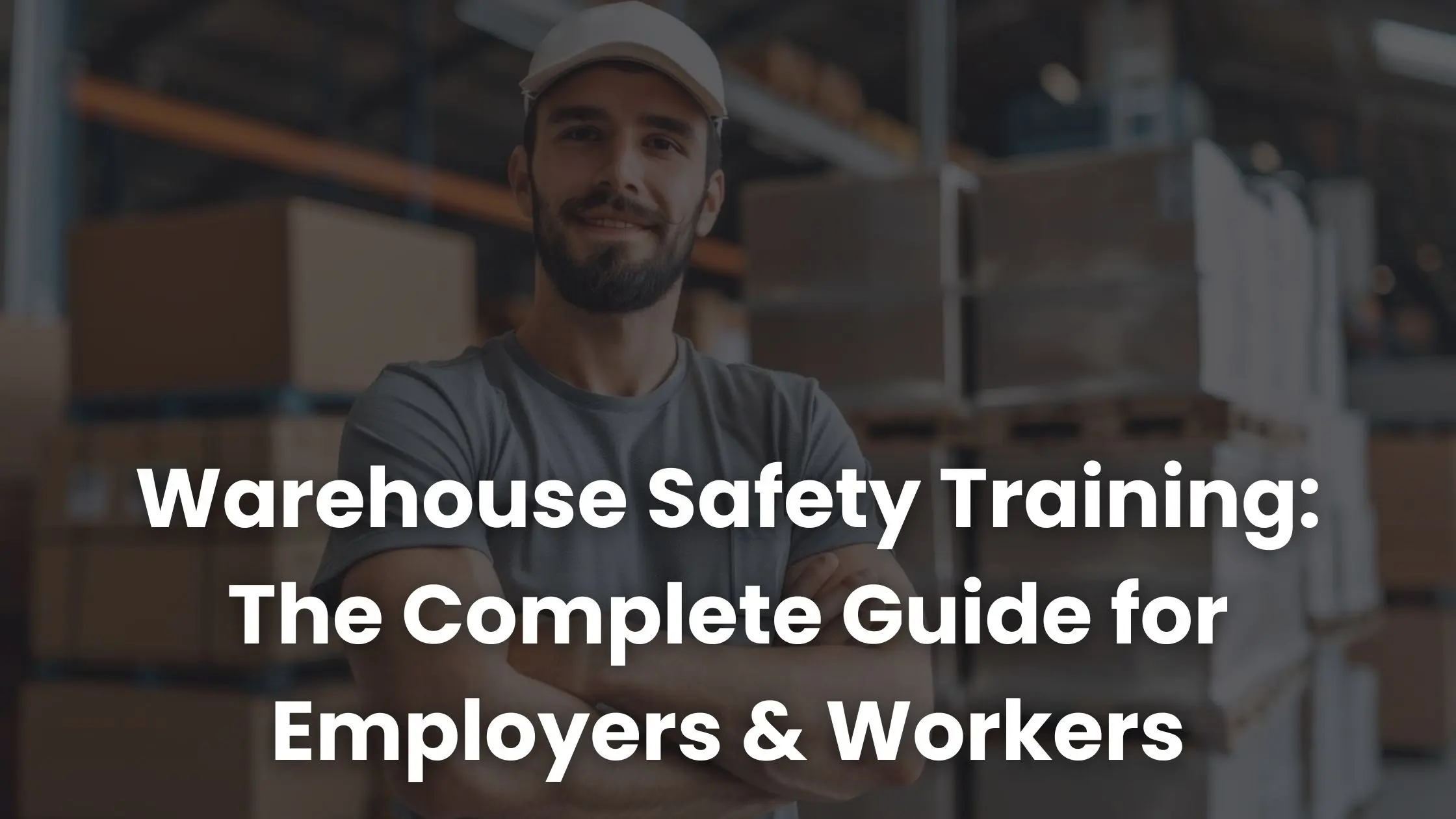
Warehouse safety training is more than a checklist. It’s protection for the people who keep supply chains moving. Every year, forklift incidents alone injure nearly 100,000 workers in U.S. warehouses and take dozens of lives.
Behind those numbers are individuals balancing heavy workloads, tight schedules, and physical strain. Slips, falls, or repetitive motions don’t just interrupt tasks. They affect health, confidence, and families waiting at home.
In this article, you’ll discover how to build a warehouse safety training program that reduces risks, supports well-being, and keeps operations strong.
Warehouse safety doesn’t run on guesswork. Even though OSHA has no warehouse-specific rulebook, operations must still meet general industry requirements. These standards help create safer spaces and guide warehouse leaders on what protections to put in place:
Employers need a written program outlining chemical hazards. Workers should know what substances they handle and the protective steps that keep them safe.

Without an in-house fire brigade, warehouses need a detailed plan for fires or other emergencies. Staff must know the exact steps to follow.
Facilities with over ten employees require a written fire prevention plan, stored on-site and accessible to staff at all times.
At least two emergency exits should be available, built far apart so one fire or smoke event doesn’t block both. Exits must stay clear and regularly maintained.
Workers on elevated platforms or at height need fall protection systems. Falls remain one of the leading causes of warehouse injuries.
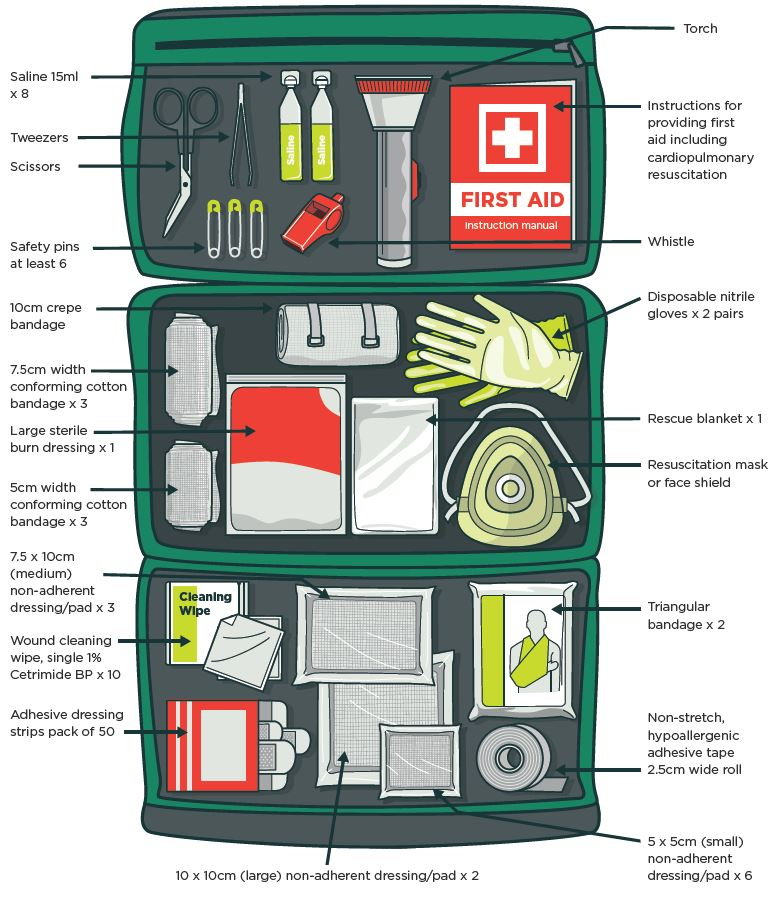
Warehouses must provide supplies and trained personnel matched to workplace hazards, whether that means handling pallet rack collapses or forklift accidents.
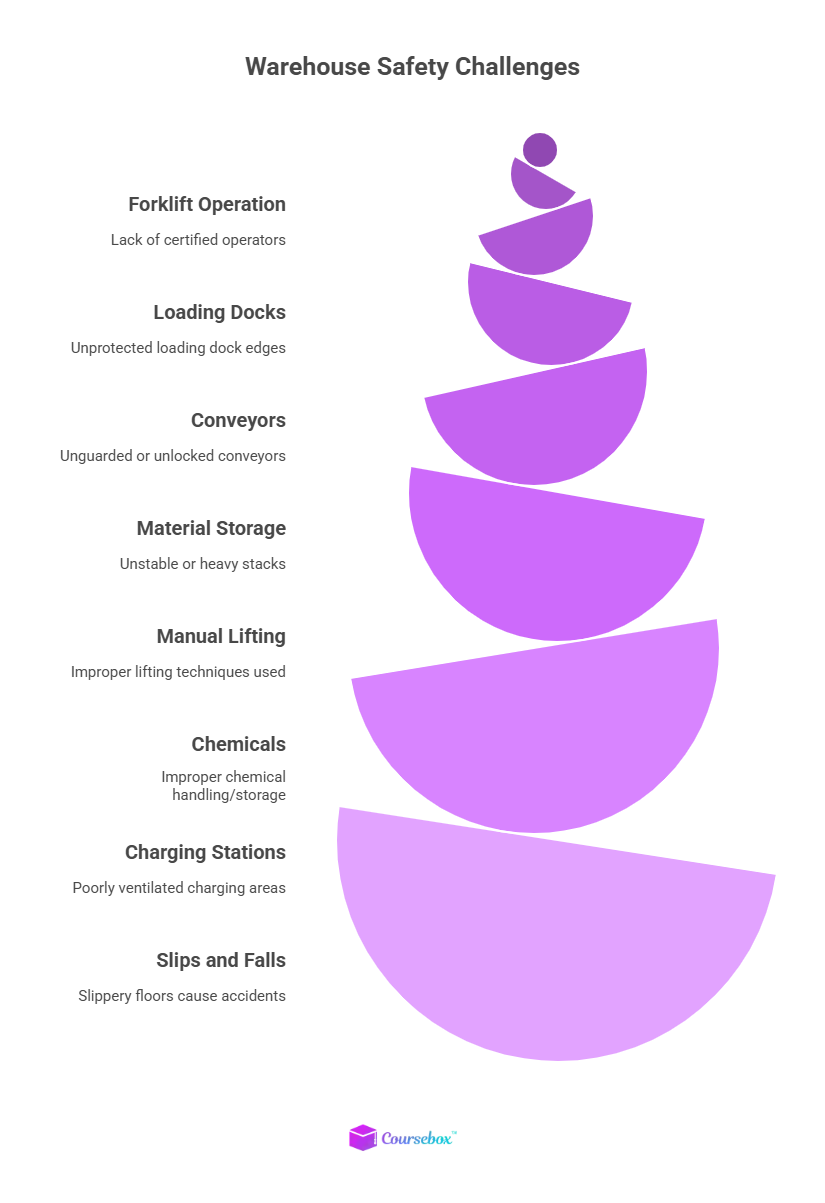
Every warehouse carries daily risks, from heavy machinery to chemical exposure. The good news: most dangers can be controlled with proper awareness, training, and protective systems. Below are common hazards and practical steps to reduce them:
Powerful tools, but also one of the biggest dangers. Only certified operators should drive them, supported by refresher training. Daily inspections catch damage before it causes harm. Unsafe use ranks among OSHA’s top warehouse citations.
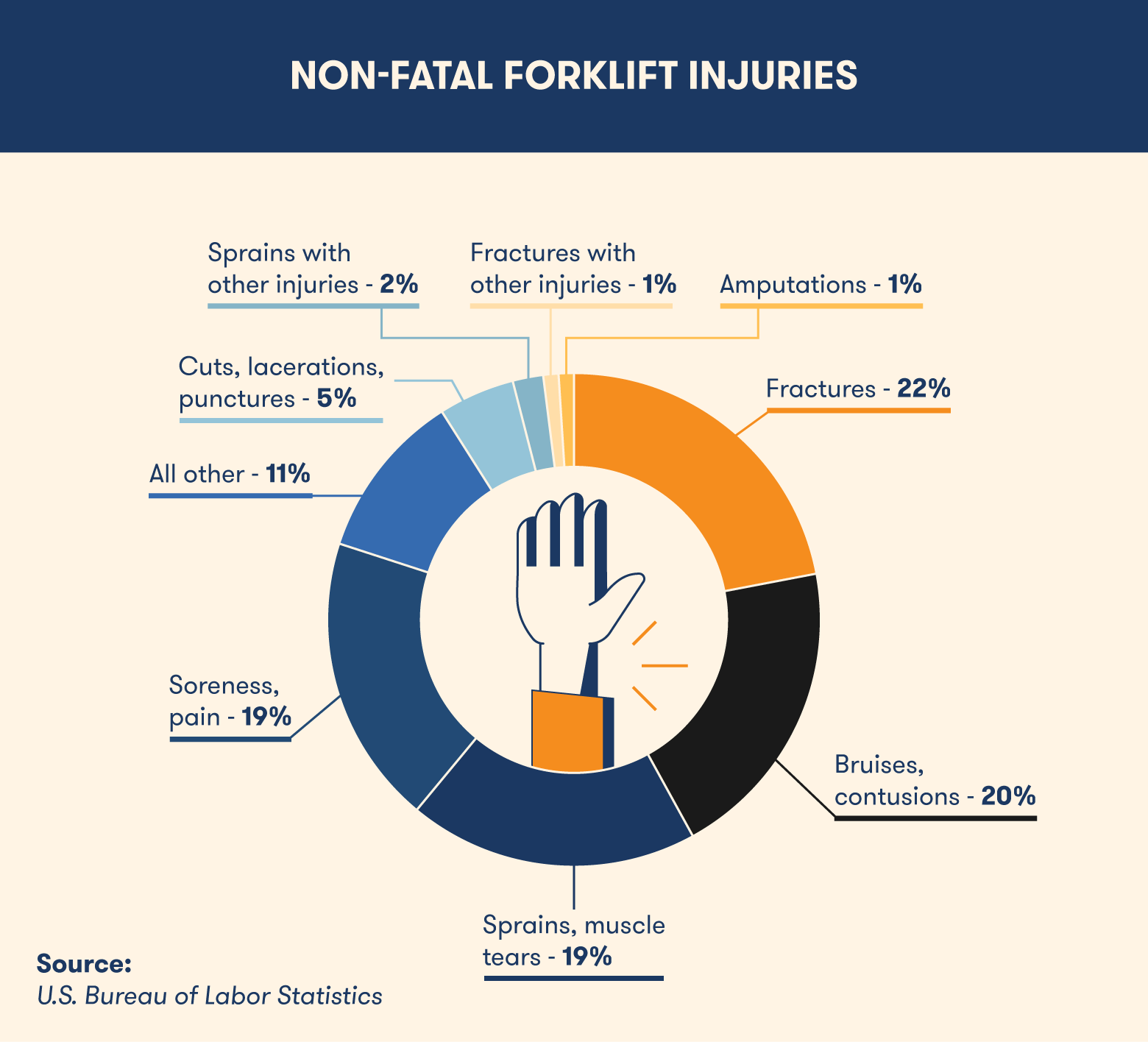
Accidents happen quickly in these busy zones. Drivers should move slowly on dock plates, keep edges clear, and use barriers or warning signs to block off unsafe areas.
Entanglement and falling objects create serious risks. Safeguarding equipment, plus strict lockout/tagout during maintenance, keeps hands and clothing away from danger.
Clear aisles reduce slips, trips, and falls. Stacks need to be stable, with heavy loads on lower or middle shelves to prevent collapse.

Repetitive lifting leads to strains and long-term injuries. Training on ergonomic posture and redesigning tasks to limit heavy lifting both protect workers.
Even small mistakes can be catastrophic. A hazard communication program ensures workers know how to handle, store, and inspect chemicals safely.
Refueling or recharging powered equipment carries fire and explosion risks. Keep these areas away from flames, ban smoking, and provide ventilation, extinguishers, and PPE.
Wet floors, clutter, or uneven surfaces cause frequent injuries. Regular housekeeping, non-slip mats, and proper footwear help prevent them.
Loud machinery affects hearing over time. Ear protection and noise monitoring programs protect long-term health.
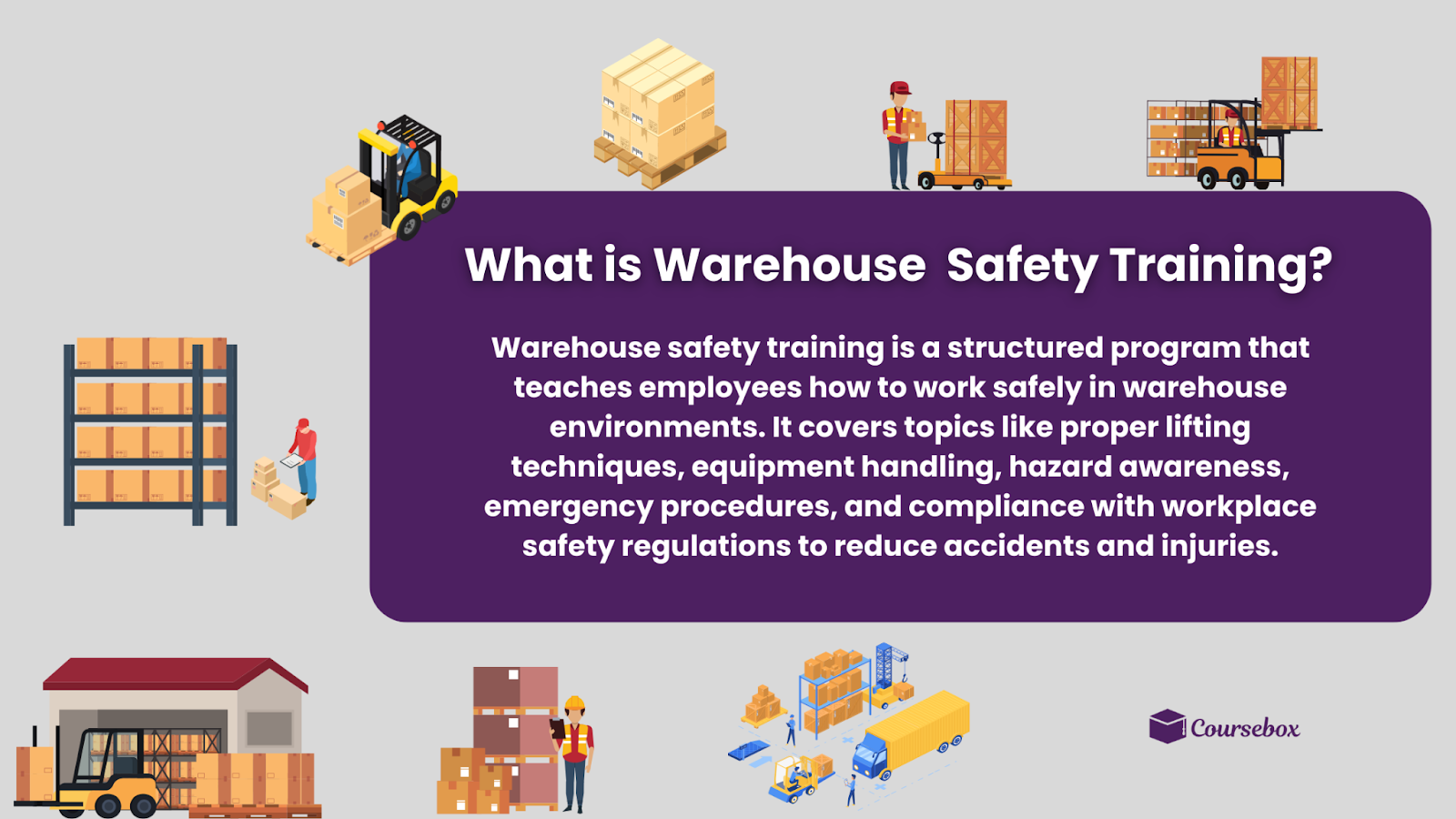
Warehouse safety training gives workers the knowledge and skills to spot risks before they become accidents. For teams in logistics, transportation, or manufacturing, training builds confidence, prevents injuries, and keeps operations compliant with OSHA standards. At the same time, businesses gain smoother workflows and stronger protection against costly setbacks.
Key benefits include:
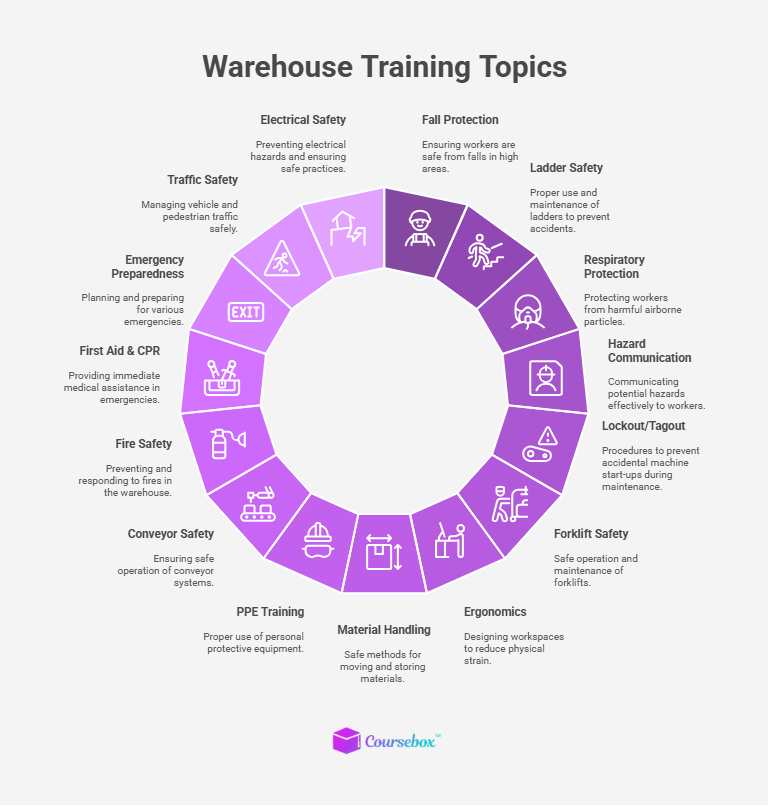
Warehouses operate at a fast pace, with people, equipment, and materials moving constantly. Without clear training, small mistakes can quickly escalate into accidents. Covering a wide range of topics ensures workers know how to stay safe while keeping operations smooth. Here’s what to include in training sessions and safety meetings:
Reaching high racks or shelves puts workers at risk of falls. Training should explain how to use guardrails, anchor points, and harnesses while showing why these systems save lives. Real-world demonstrations help workers trust the equipment and apply safe habits daily.
A ladder may look simple, yet misuse often leads to serious injuries. Workers need instruction on correct setup, three-point contact, and careful inspection before climbing. Stressing common mistakes, like overreaching, helps workers avoid accidents that statistics show happen far too often.
Dust, vapors, or chemicals can cause long-term health damage. Training must cover different types of protective equipment—filters, purifiers, and breathing gear—and when each is needed. Workers also benefit from practice sessions where masks and respirators are fitted correctly.
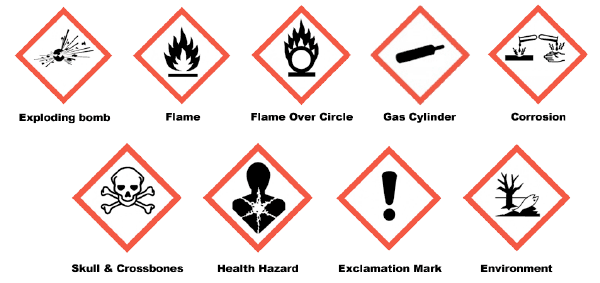
Chemicals stored or transported in warehouses demand strict protocols. Workers must understand labeling systems, safety data sheets, and emergency steps for spills or exposure. Clear training empowers employees to recognize risks early and respond with confidence.
Machines hold hidden energy that can injure during repairs or maintenance. Training shows workers how to shut down, lock, and tag equipment properly. Emphasizing step-by-step checks prevents accidents caused by rushing or assumptions.
Forklifts move heavy loads efficiently, but cause many warehouse injuries each year. Operators need certification, refresher courses, and daily inspection routines. Training should also include guidance for pedestrians, since awareness around moving forklifts reduces collision risks.
Long shifts, awkward postures, and repetitive lifting often result in pain or injury. Ergonomic training covers safe body positioning, use of lifting tools, and design improvements that lessen strain. Workers who understand ergonomics protect both short-term comfort and long-term health.
Proper stacking, clear aisles, and smart use of handling equipment prevent slips, trips, and falling loads. Training teaches workers how to distribute weight evenly and recognize unsafe storage before it leads to injury.
Protective gear only works when worn correctly. Workers need training on the selection, use, and care of gloves, helmets, hearing protection, and other essential equipment. Proper PPE training shows workers how simple actions protect them daily.
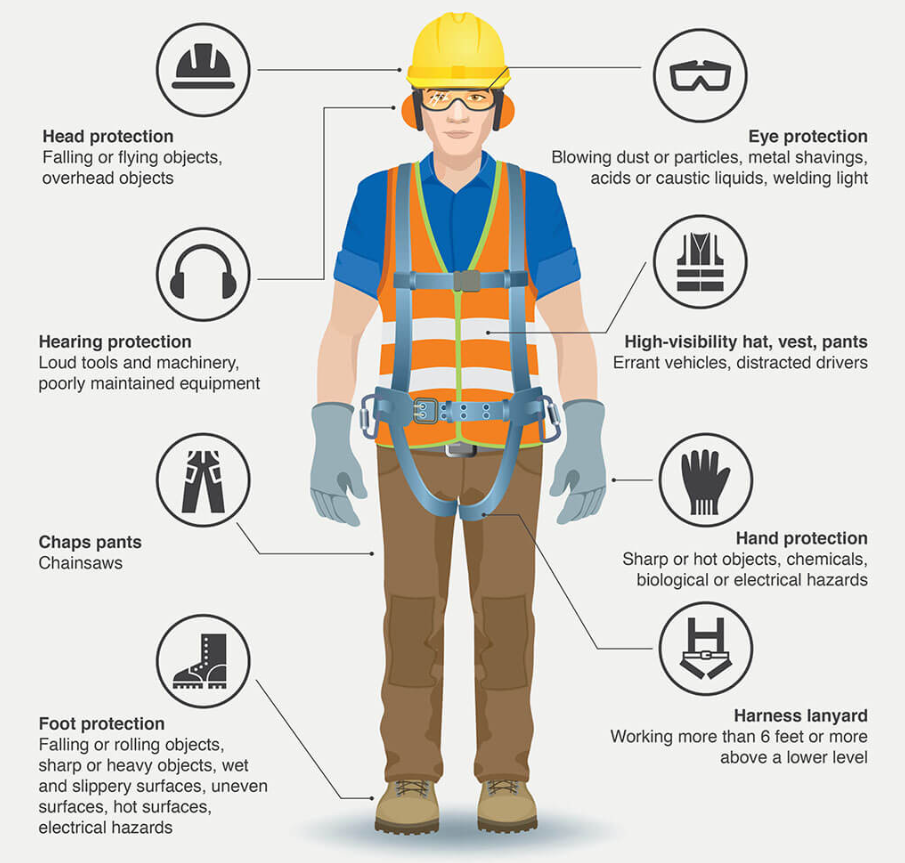
Conveyor belts move products quickly but expose workers to pinch points and moving parts. Training explains how guards, emergency stops, and lockout/tagout systems protect against entanglement. Practical sessions reinforce respect for conveyor hazards.
Flammable materials and high activity make fire prevention critical. Training should cover hazard recognition, prevention strategies, and evacuation routes. Workers also need hands-on practice with extinguishers, since quick action can contain small fires safely.
Immediate response often makes the difference between minor and major injury outcomes. OSHA recommends trained personnel on every shift, ready to stabilize injured coworkers until professional care arrives.
Warehouses face unpredictable risks, from fires to equipment failures. Regular drills and planning sessions ensure workers know exactly what to do. Team-based practice builds confidence and prevents panic during real emergencies.
Constant movement of forklifts, trucks, and pedestrians demands strict coordination. Training covers designated walkways, signage, and speed rules, reducing the chance of collisions.
Extension cords, outlets, and powered equipment present hidden dangers. Training highlights inspection routines, safe handling, and steps to avoid shocks or arc flashes. Even small improvements, like removing damaged cords, save lives.

Building a warehouse safety training program takes planning, structure, and commitment. A solid framework not only addresses compliance but also creates a culture where workers feel supported and confident. Use the following steps as a blueprint:
Begin by reviewing hazards present in daily operations. Forklifts, conveyors, elevated platforms, hazardous chemicals, and repetitive lifting all carry unique dangers. Walk through the facility with supervisors and workers to note unsafe practices or overlooked risks. Incident records provide valuable insight into patterns that must be addressed.
Set clear objectives for the training program. Goals should connect directly to reducing accidents, improving knowledge, and building consistent habits. For example, you might target fewer forklift incidents, faster emergency response times, or stronger compliance with OSHA standards. Clear goals give direction and make progress measurable.
Create training content tailored to your workforce. Visuals, demonstrations, and hands-on practice often resonate better than lengthy documents. Topics should cover common warehouse hazards, safe equipment operation, emergency steps, and the use of protective gear. Include real scenarios so lessons feel practical instead of theoretical.

Pro Tip: Consider using Coursebox AI to streamline course creation, organize training modules, and issue completion certificates with minimal effort. Start free today!
Different workers learn best through different formats. Blend instructor-led sessions, digital modules, toolbox talks, and peer demonstrations. Break material into short, focused segments so workers retain critical knowledge without fatigue. Consider language needs or literacy levels to ensure no team member is left behind.
Supervisors guide daily habits. When leaders model safe practices, workers follow. Train managers to reinforce procedures, conduct spot checks, and correct unsafe actions immediately. Leadership training builds accountability across every level of the operation.
Warehouse work is physical, so training must include practice. Workers should demonstrate forklift operation, proper lifting, lockout/tagout steps, and PPE use under supervision. Correct mistakes early and repeat drills until safe habits become routine.

Keep detailed records of every session. Certifications confirm that workers have completed required training, protecting both employees and employers in case of audits or investigations. Documentation also highlights who may need refresher sessions.
Safety knowledge fades if not reinforced. Schedule refresher sessions at least annually, or sooner if hazards change, equipment gets upgraded, or new risks emerge. Short toolbox talks between shifts also help keep safety fresh in workers’ minds.
Workers often notice hazards before management does. Build channels where employees can report concerns without fear. Feedback strengthens training by highlighting blind spots and offering practical suggestions from those closest to the work.
A strong program evolves. Track accident rates, near misses, and inspection results to measure impact. Review findings regularly and adjust content where needed. Continuous improvement keeps training effective and relevant.
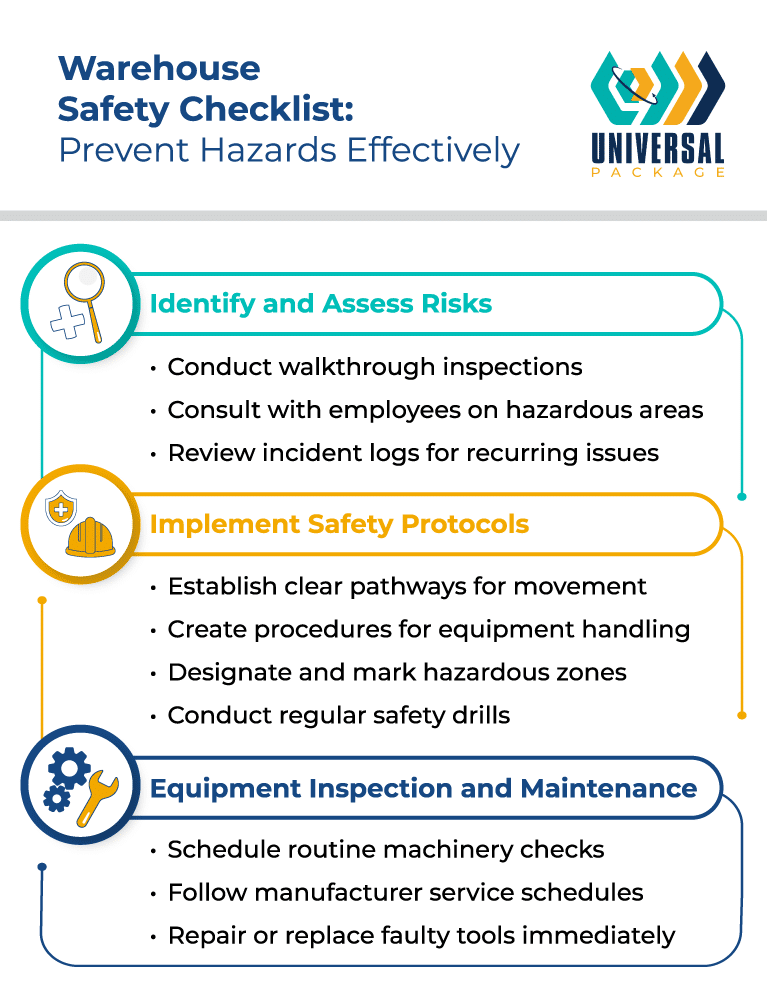
Warehouse safety training isn’t a one-time task. It’s a shared effort between managers and workers. Each shift brings new challenges, yet consistent actions keep risks under control and teams protected.
The first step toward this consistency is training.
Coursebox AI makes it easier to design and deliver training programs across devices while rewarding workers with custom certificates.
Book a demo today!
Five core safety trainings focus on protecting workers in any industrial setting: 1) Hazard Communication (HAZCOM), 2) Personal Protective Equipment (PPE), 3) Fire Safety & Emergency Response, 4) Equipment Operation & Lockout/Tagout, and 5) Ergonomics & Manual Handling. These sessions help employees prevent injuries, follow OSHA regulations, and maintain a safer, more productive warehouse environment.
Warehouse safety rules include keeping aisles clear, wearing proper PPE, following forklift and equipment protocols, storing materials safely, and adhering to emergency procedures. Workers should also respect traffic signs, participate in training, and report hazards immediately. Following these rules minimizes accidents, reduces injuries, and ensures compliance with OSHA and industry standards.
The 2-bay rule helps manage warehouse space and reduce congestion. It limits storage of pallets or products to two bays deep, ensuring easy access to items, safer forklift operation, and clear visibility for workers. Following this rule prevents overstacking, minimizes the risk of falls, and supports smoother, more efficient material handling throughout the facility.
5S is a lean methodology for workplace organization that enhances safety and efficiency: Sort, Set in order, Shine, Standardize, Sustain. Applying 5S in warehouses reduces clutter, identifies hazards, improves workflow, and keeps equipment and materials in proper locations. This approach lowers accident risks and boosts productivity while fostering a culture of continuous improvement.
